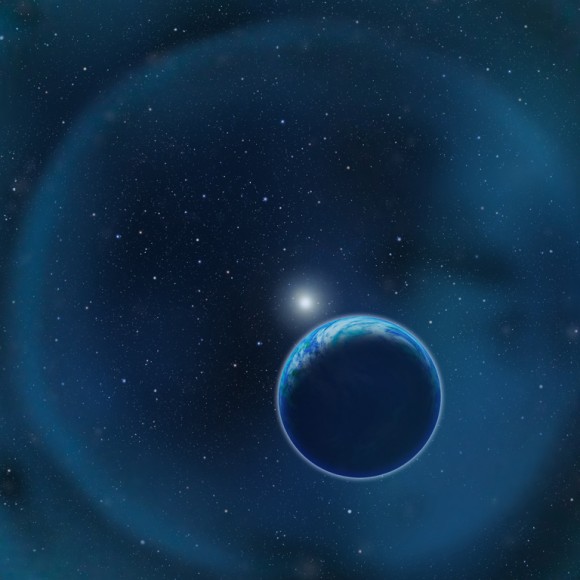

| Visitors Now: | |
| Total Visits: | |
| Total Stories: |

| Story Views | |
| Now: | |
| Last Hour: | |
| Last 24 Hours: | |
| Total: | |
Why Dying Stars Might be a Good Place to Look for Life

A ghostly blue ring is a planetary nebula – hydrogen gas the star ejected as it evolved from a red giant to a white dwarf.
Credit: David A. Aguilar (CfA)
We’ve currently found 867 different exoplanets, but have yet to definitely determine if one of those harbors life. How will astronomers make that determination? They’ll look at things such as its composition, orbital properties, atmosphere, and potential chemical interactions. While oxygen is relatively abundant in the Universe, finding it in the atmosphere of a distant planet could point to its habitability because its presence – in large quantities — would signal the likely presence of life.
But where to look first? A new study finds that we could detect oxygen in the atmosphere of a habitable planet orbiting a white dwarf – a star that is in the process of dying — much more easily than for an Earth-like planet orbiting a Sun-like star.
“In the quest for extraterrestrial biological signatures, the first stars we study should be white dwarfs,” said Avi Loeb, theorist at the Harvard-Smithsonian Center for Astrophysics (CfA) and director of the Institute for Theory and Computation.
Loeb and his colleague Dan Maoz from Tel Aviv University estimate that a survey of the 500 closest white dwarfs could spot one or more habitable Earths.
(…)
Read the rest of Why Dying Stars Might be a Good Place to Look for Life (643 words)
© nancy for Universe Today, 2013. |
Permalink |
No comment |
Post tags: exoplanets, James Webb Space Telescope
Feed enhanced by Better Feed from Ozh
2013-02-25 17:31:15
Source: http://www.universetoday.com/100267/why-dying-stars-might-be-a-good-place-to-look-for-life/
Source:


